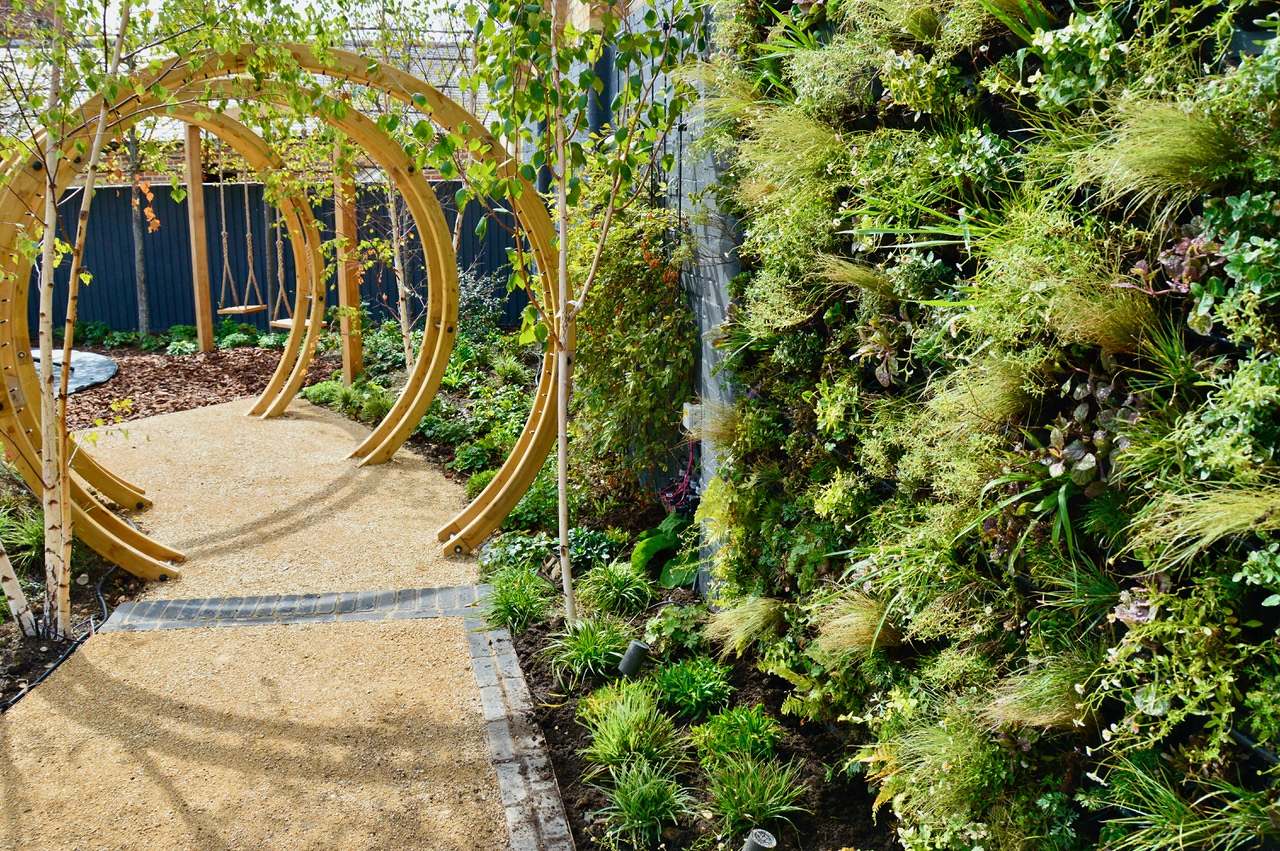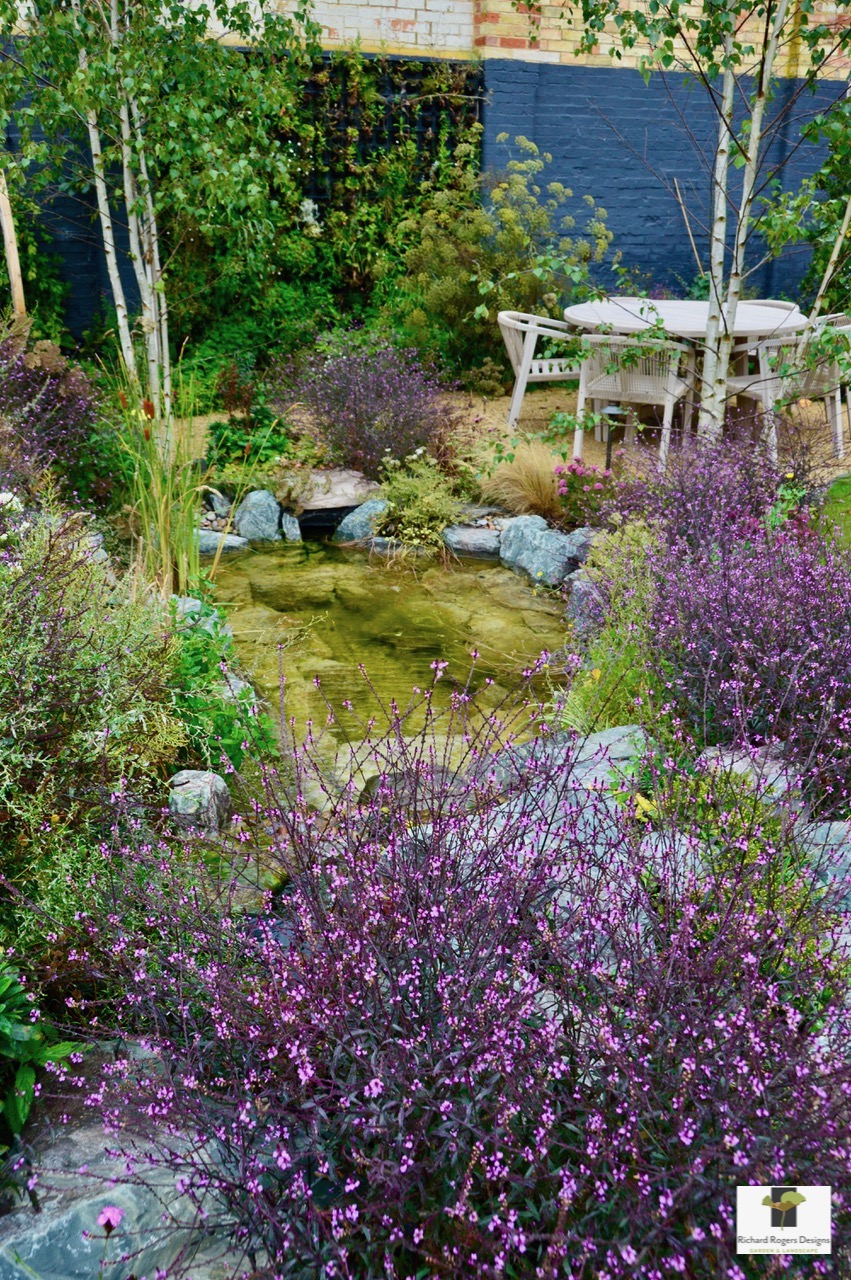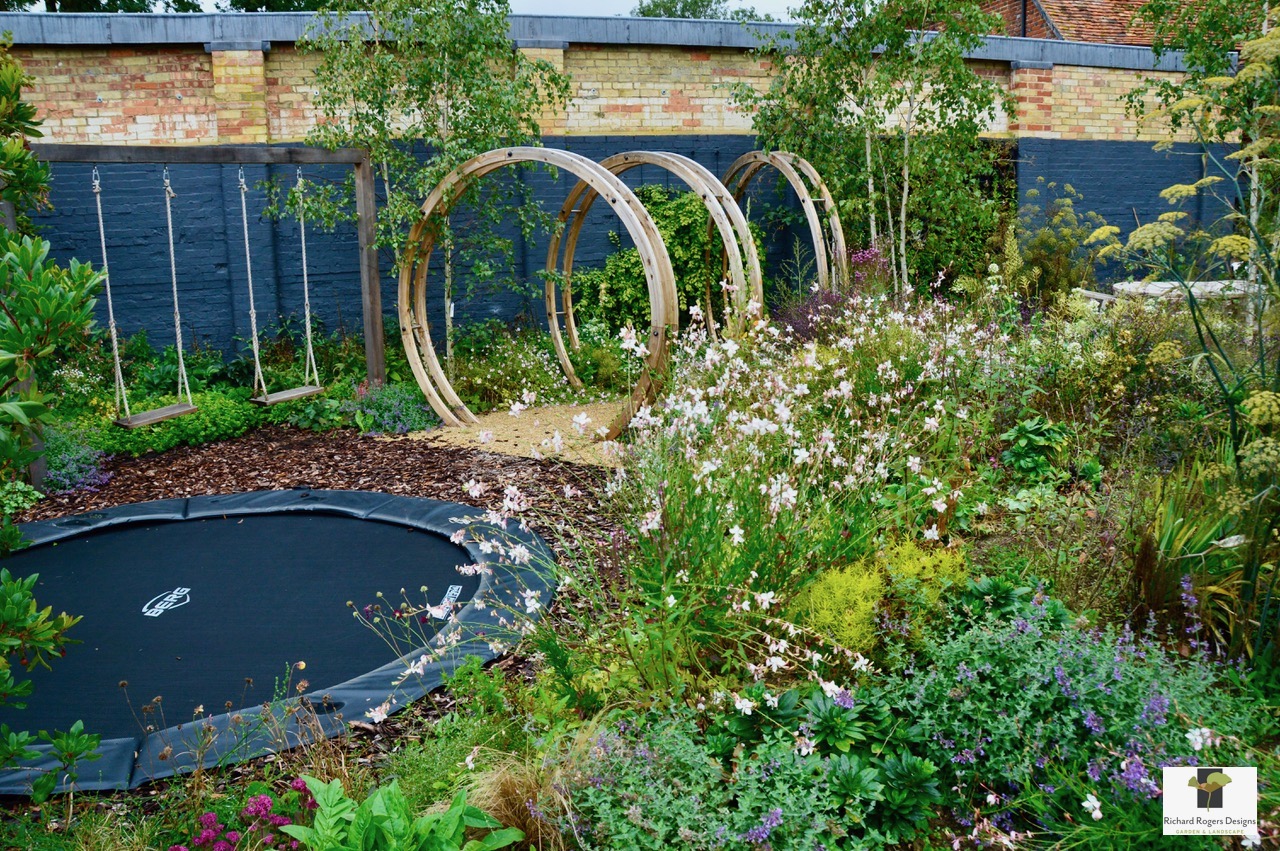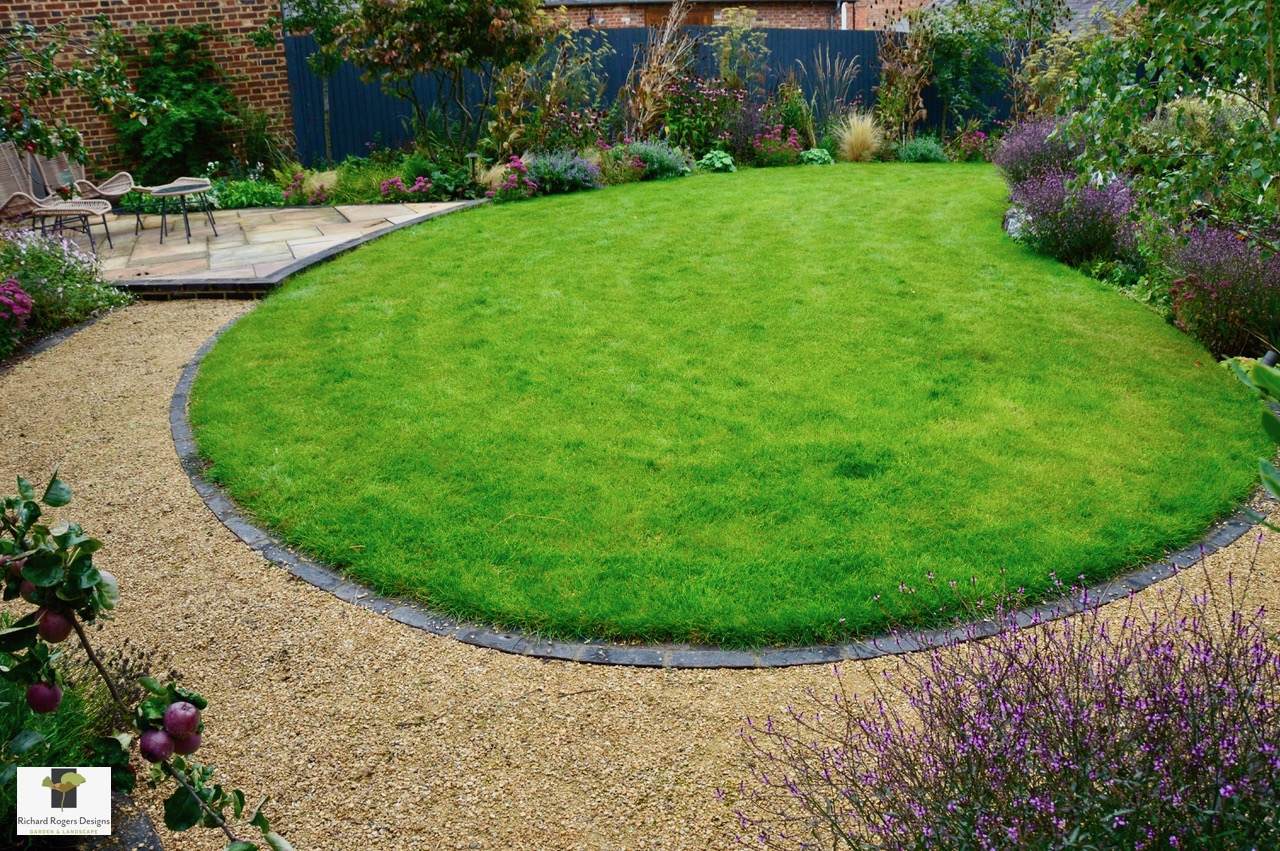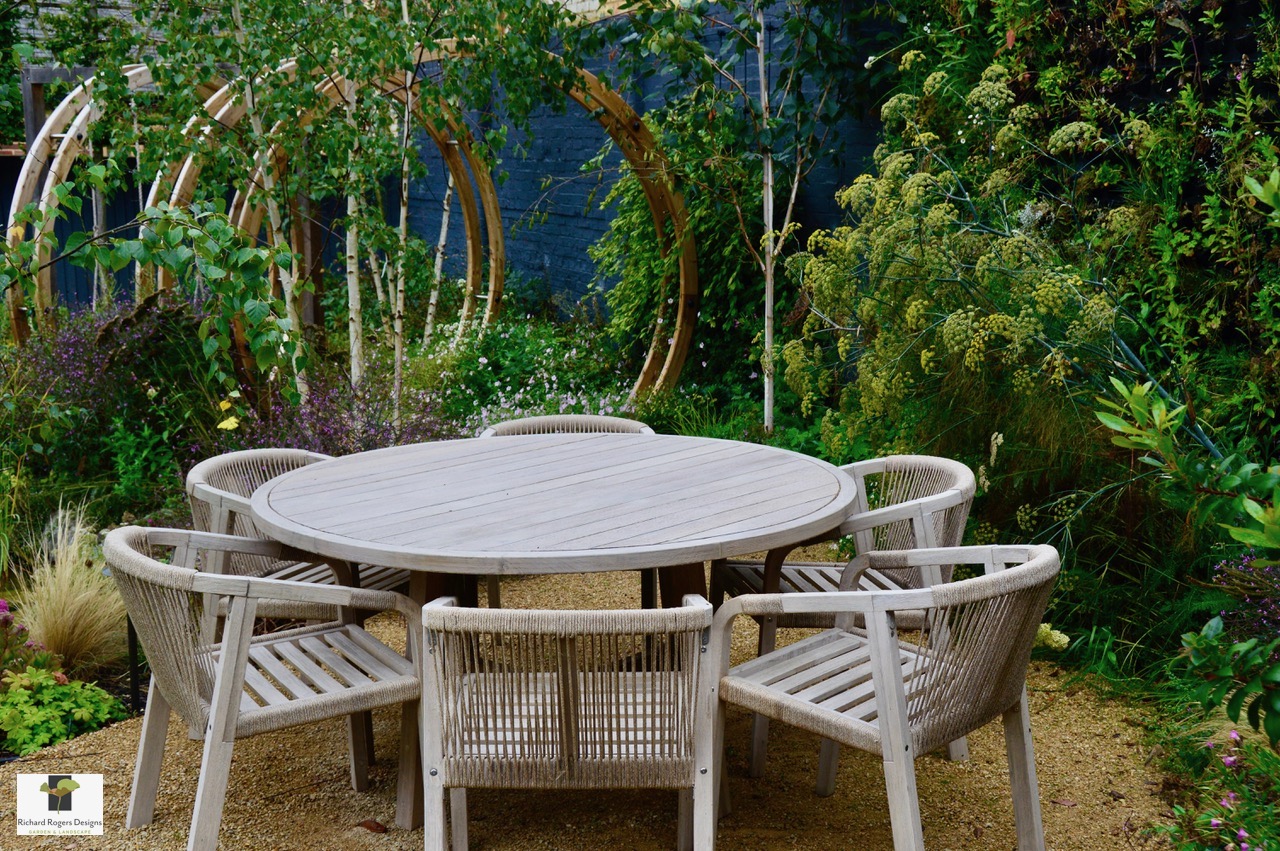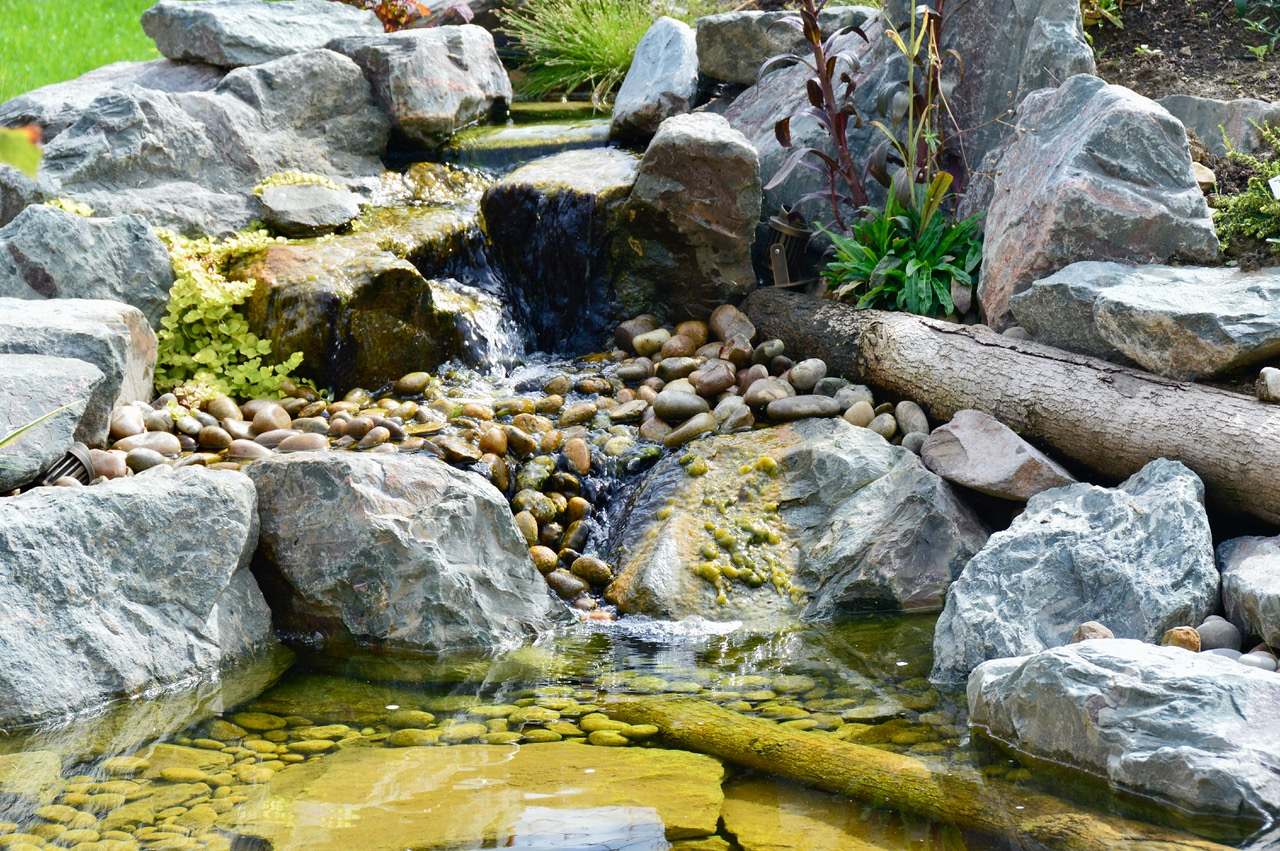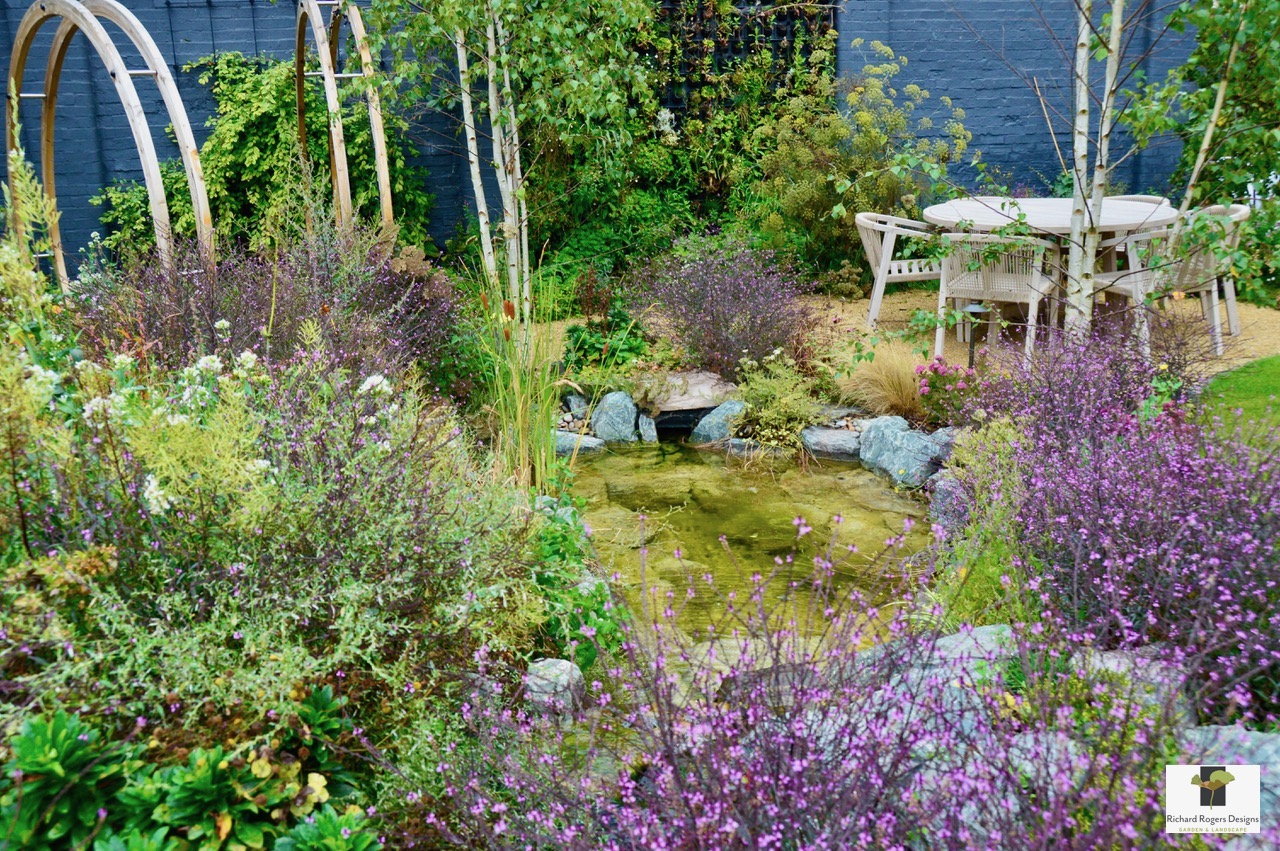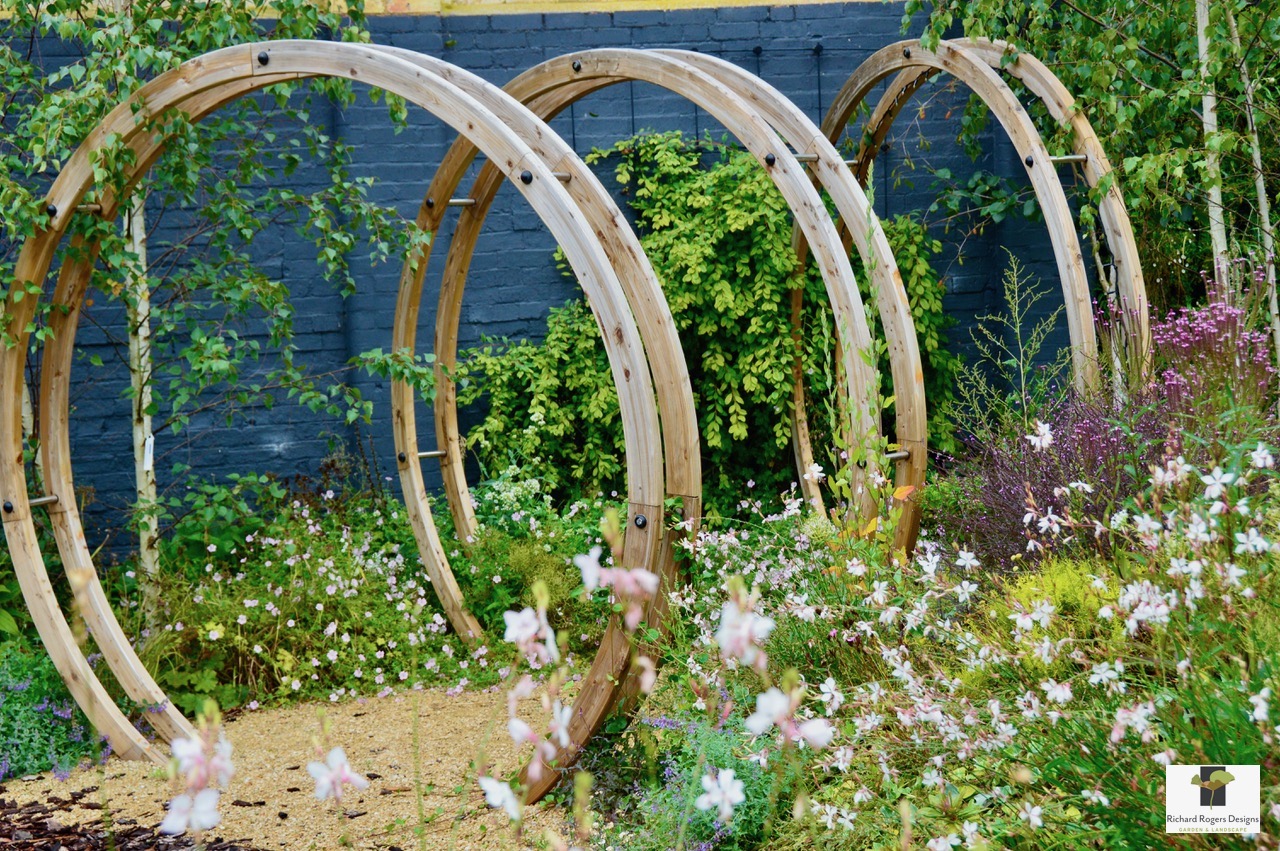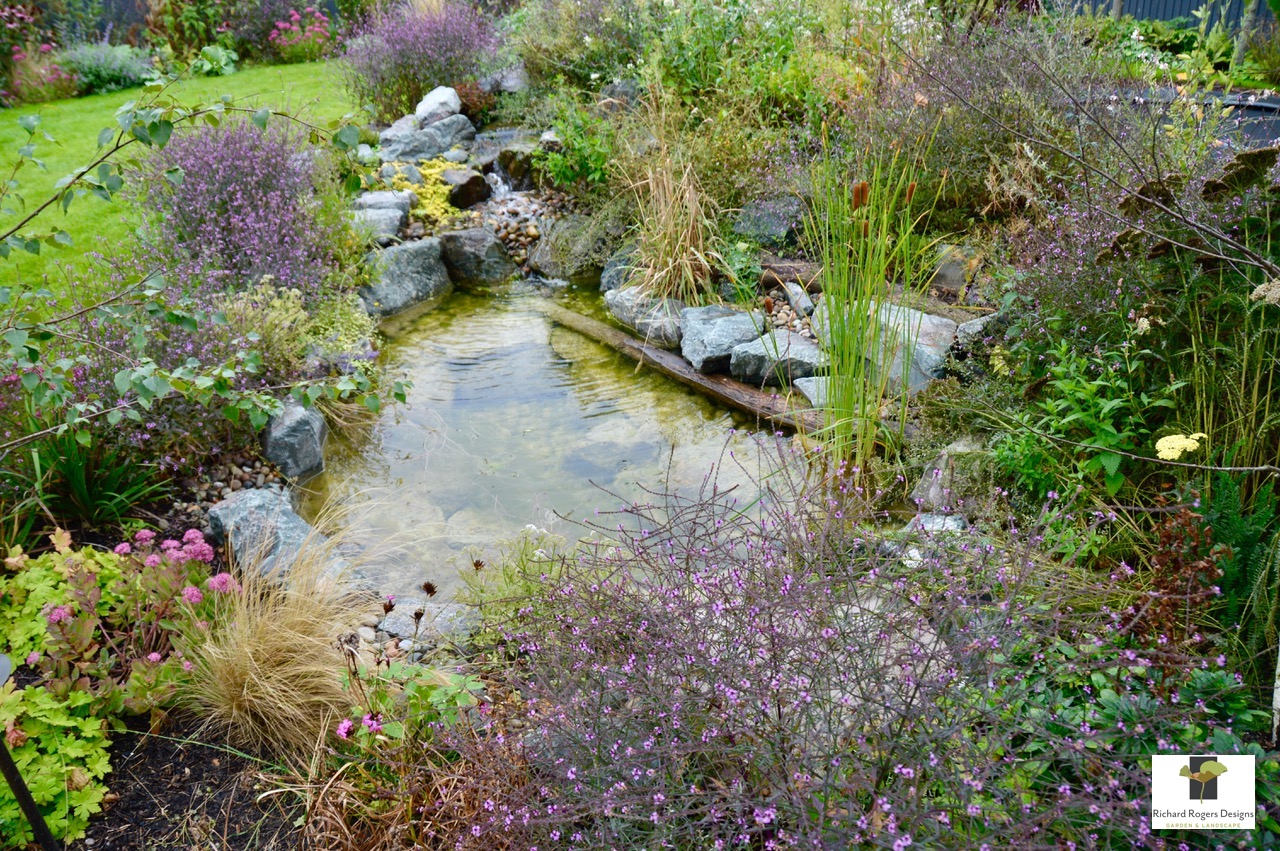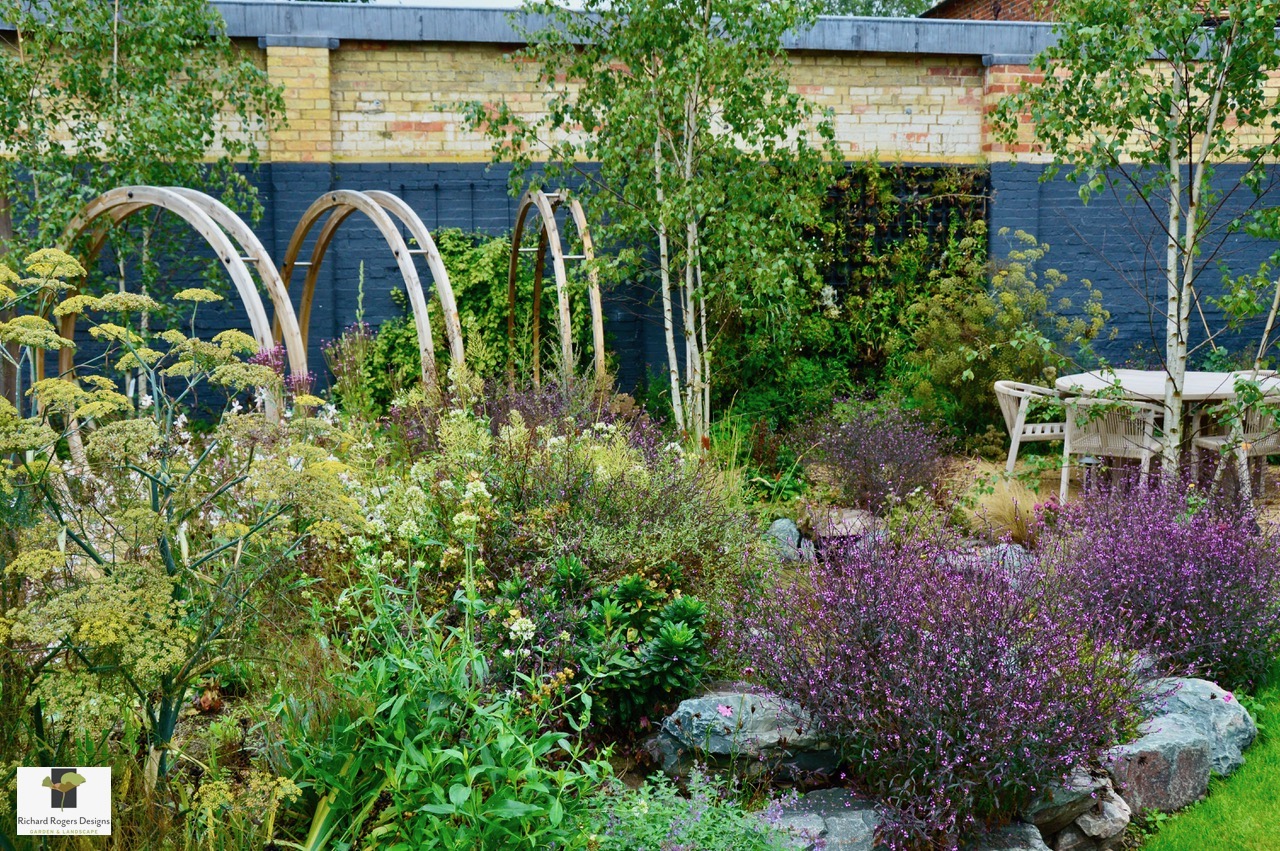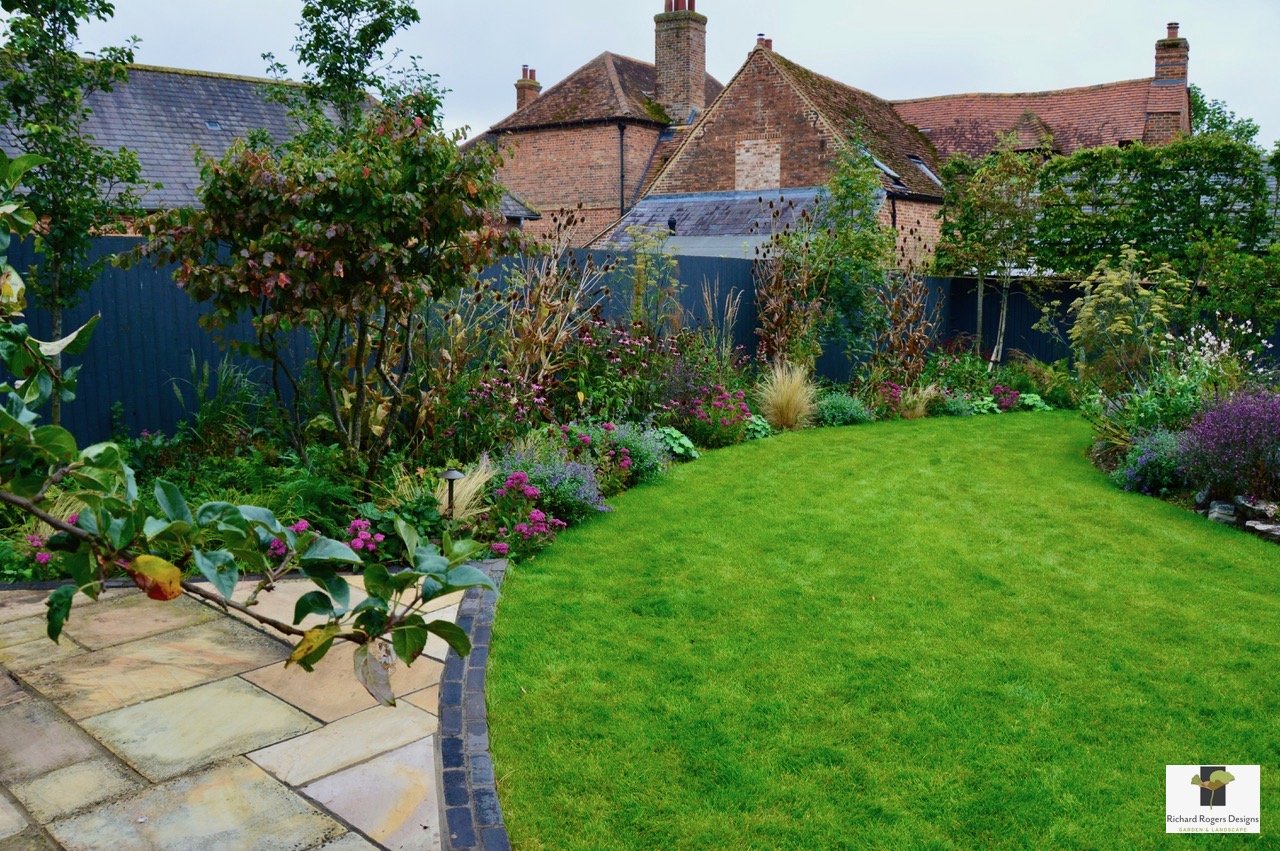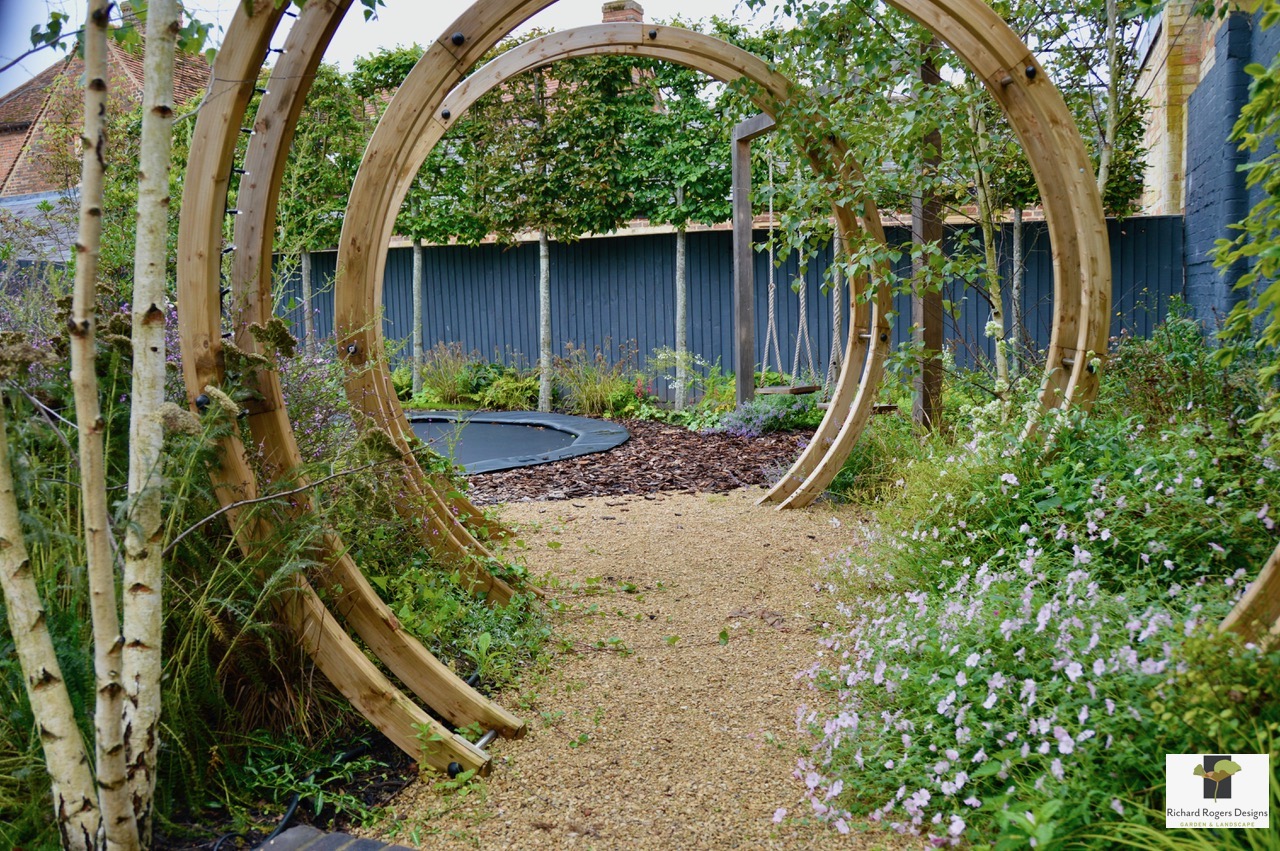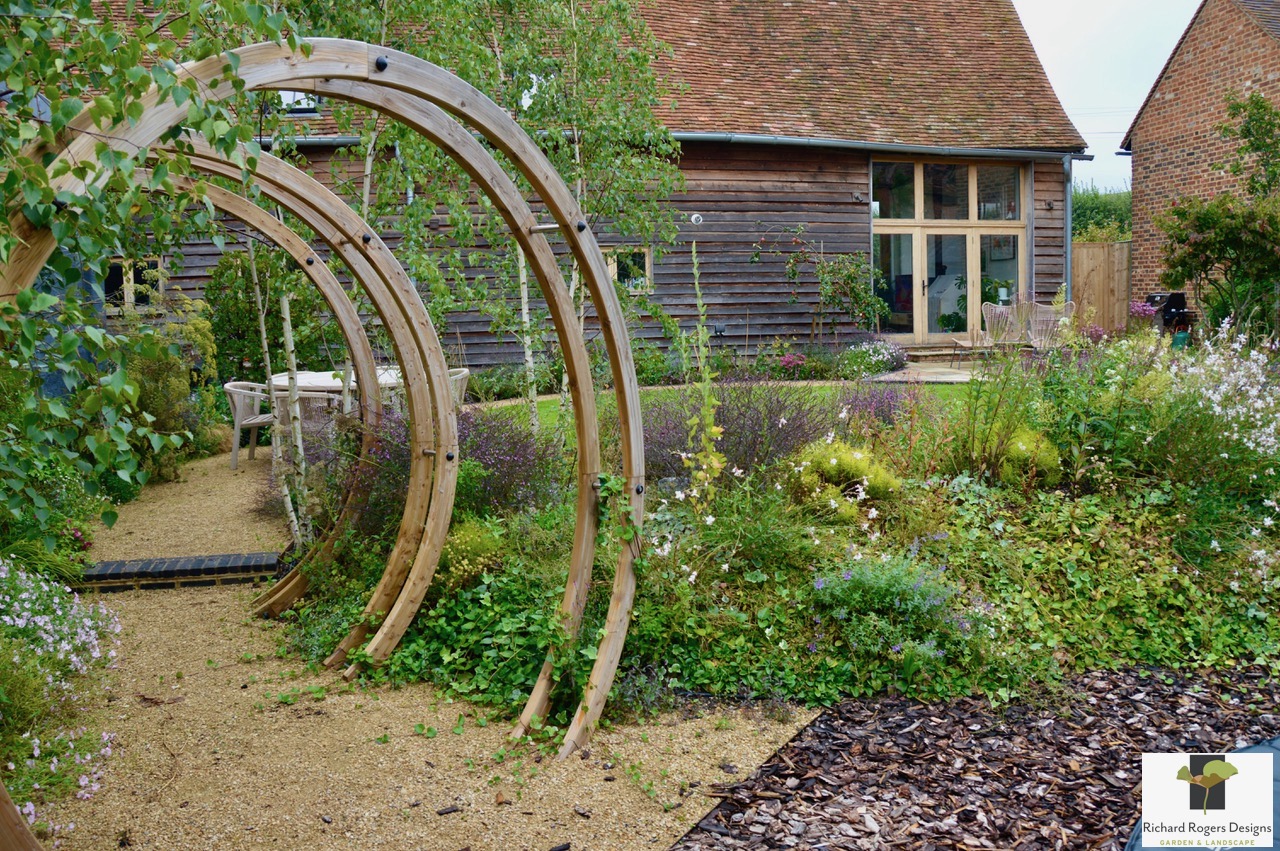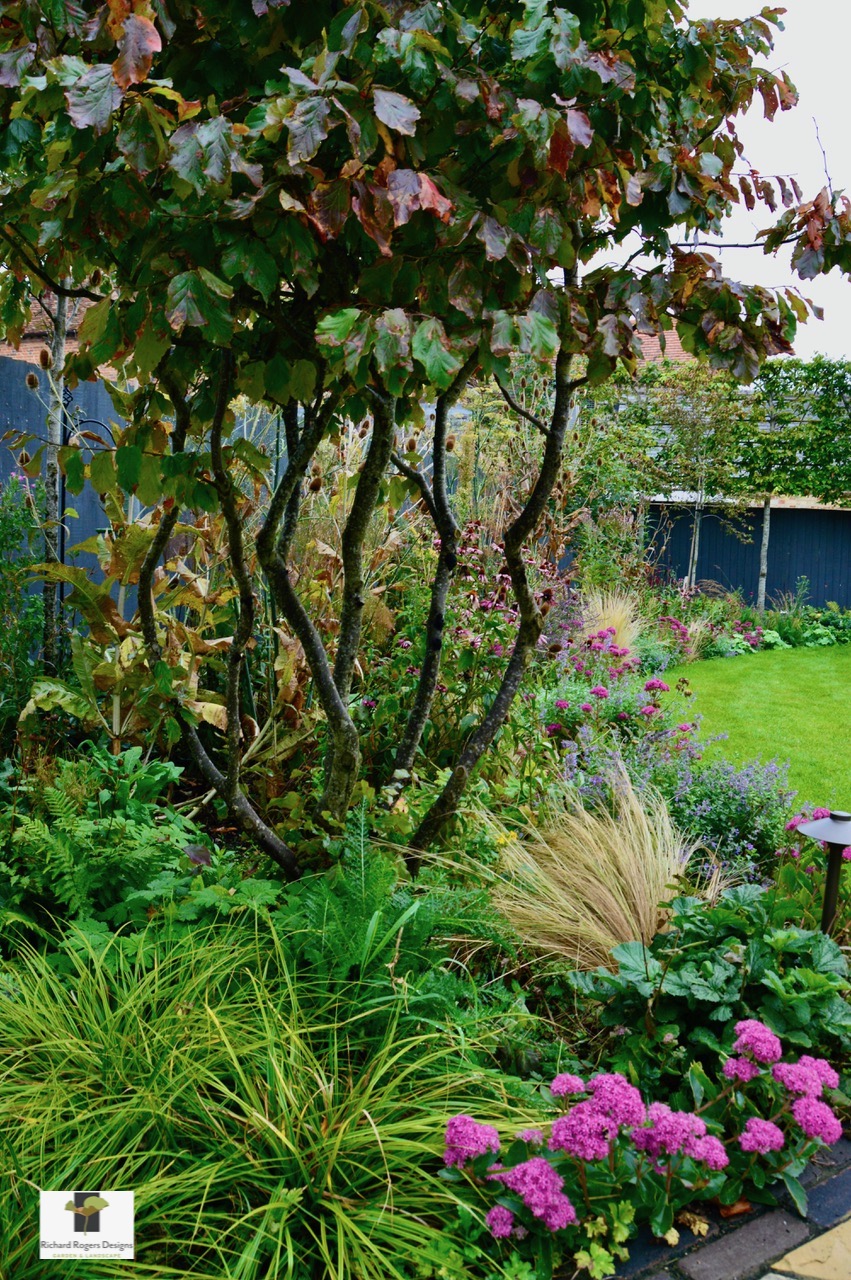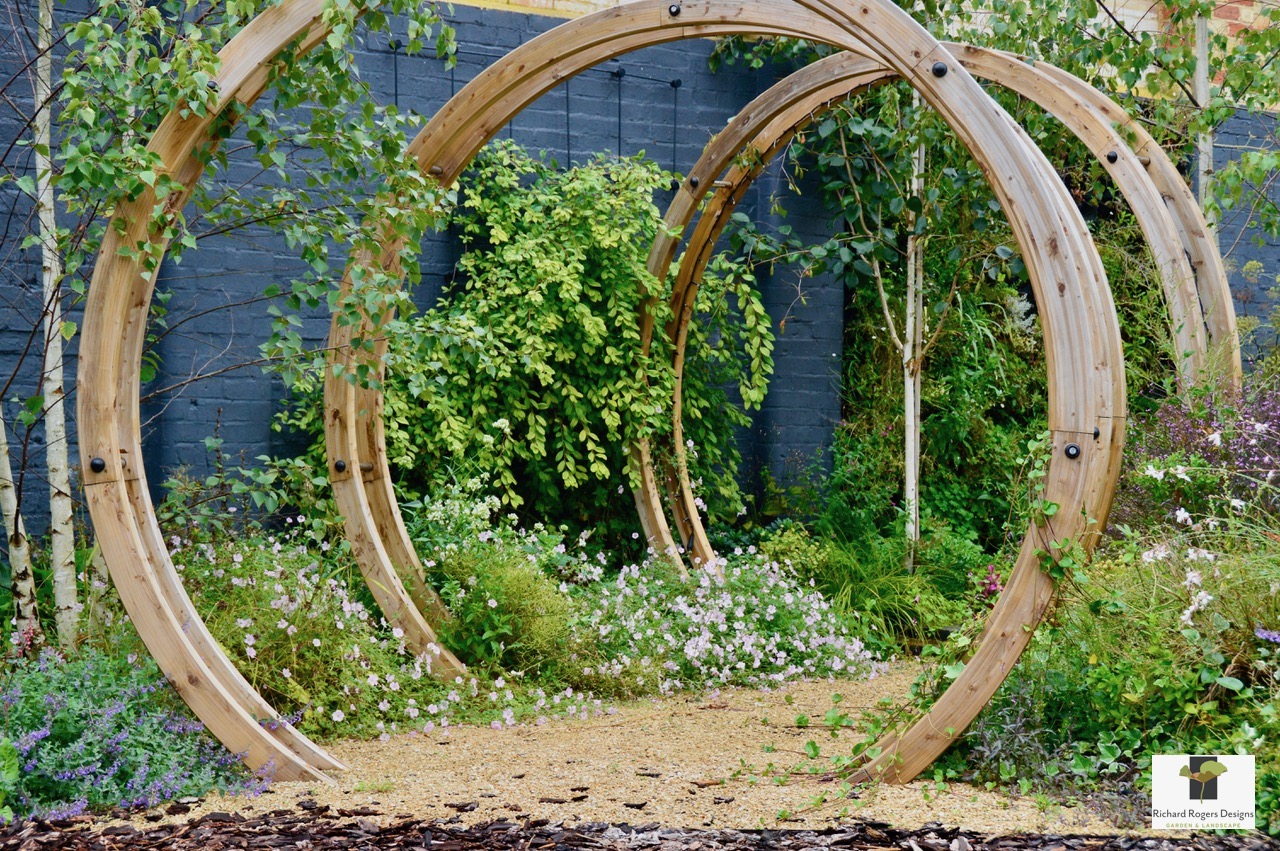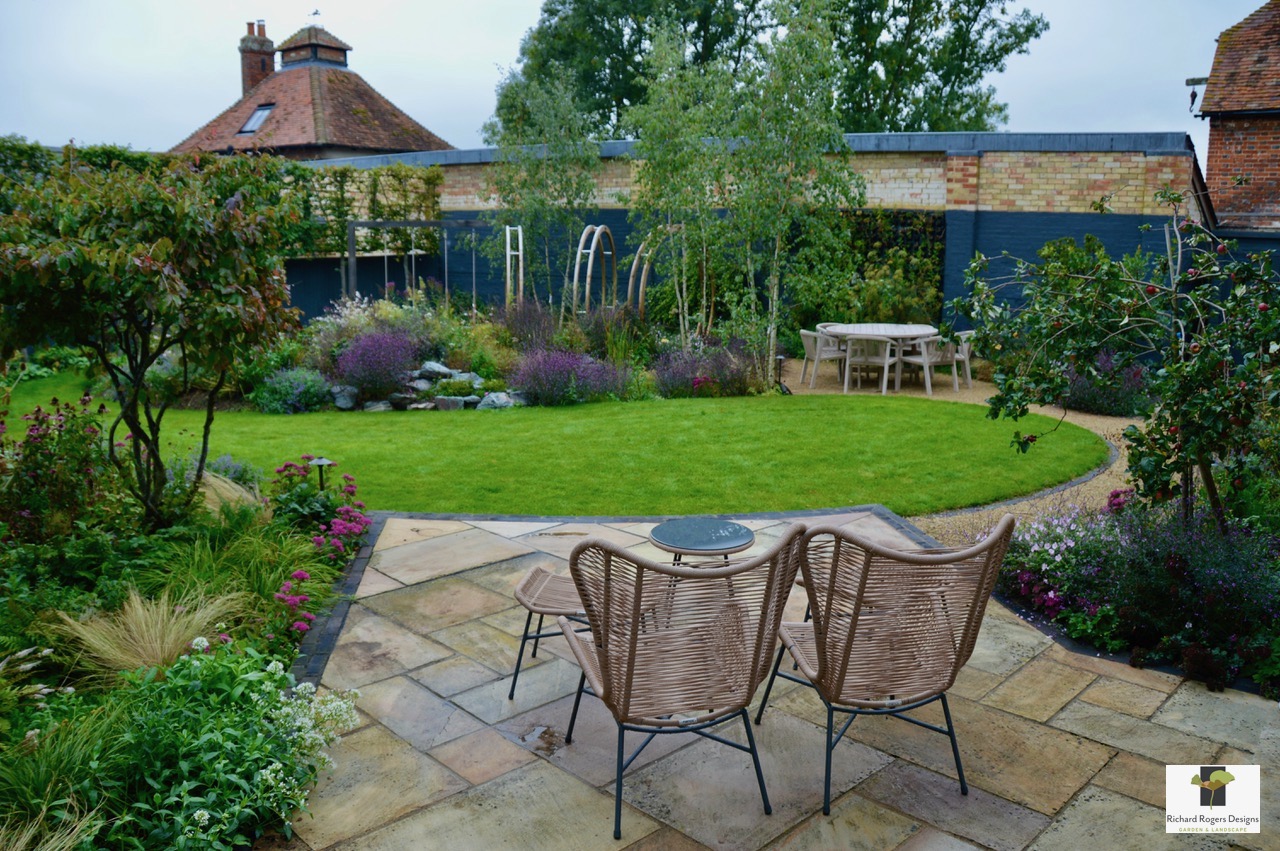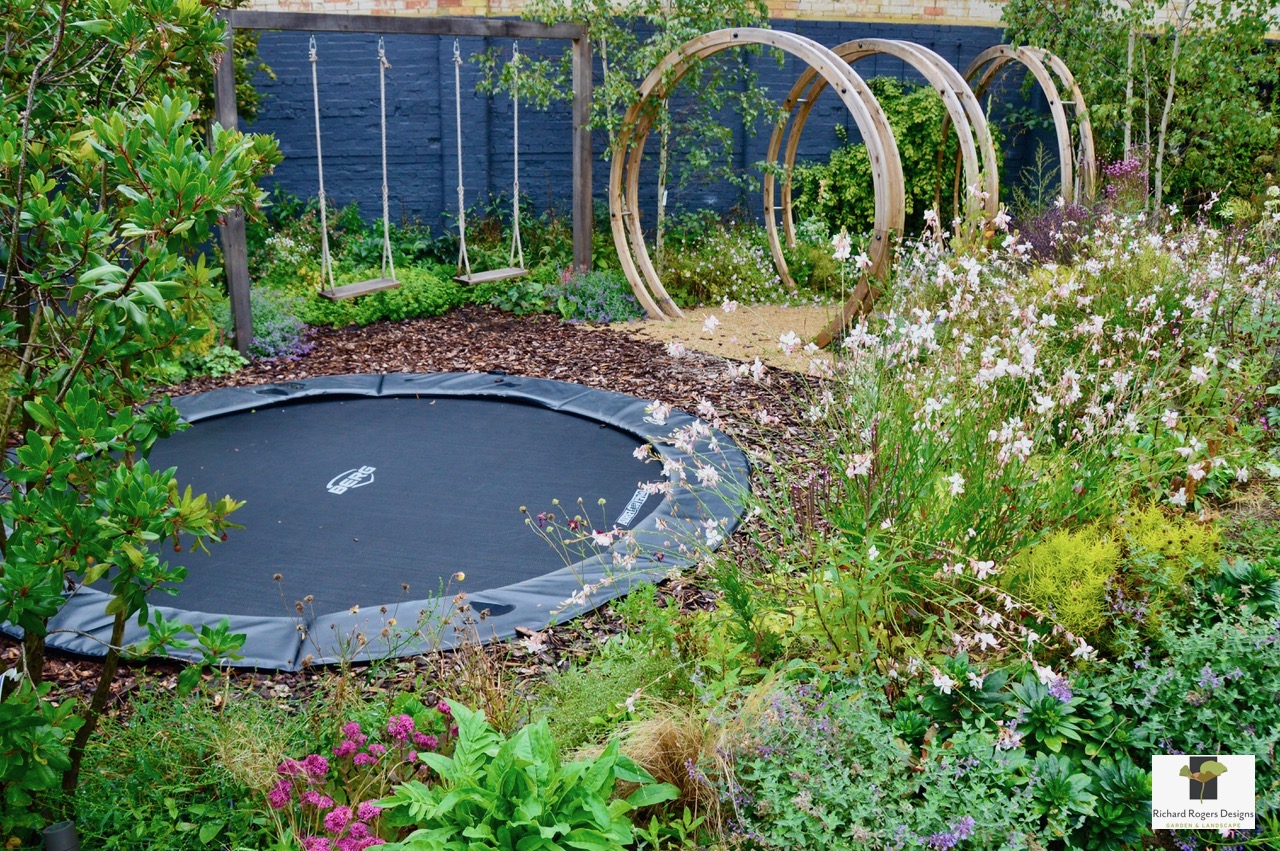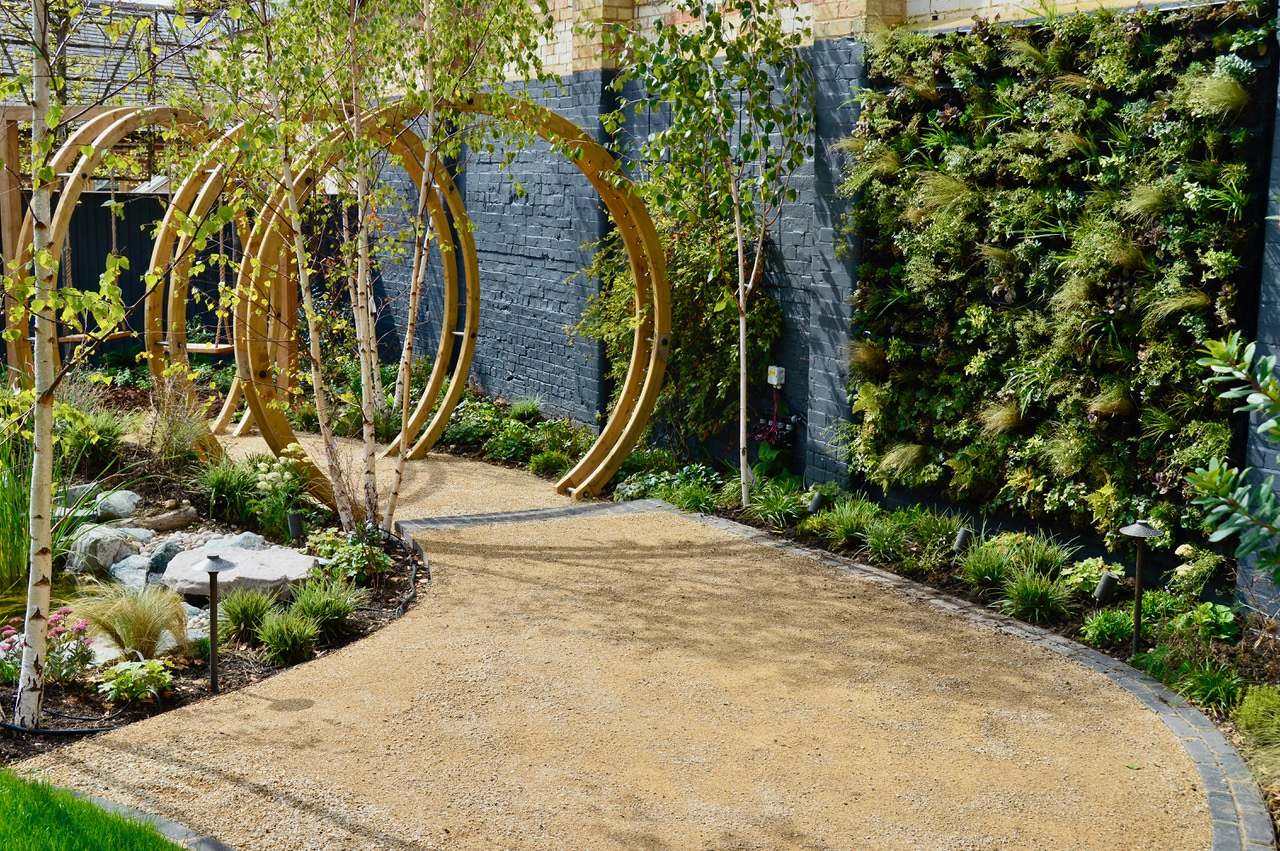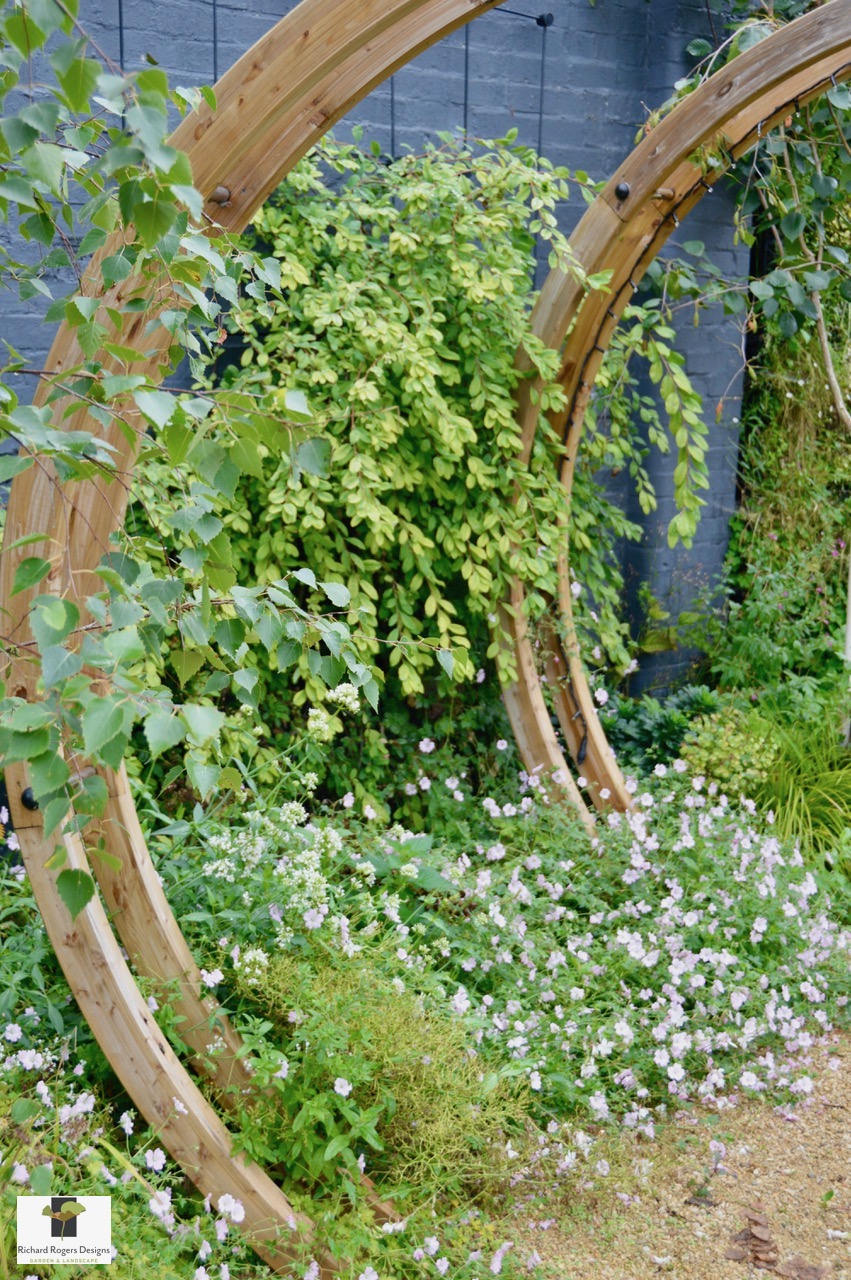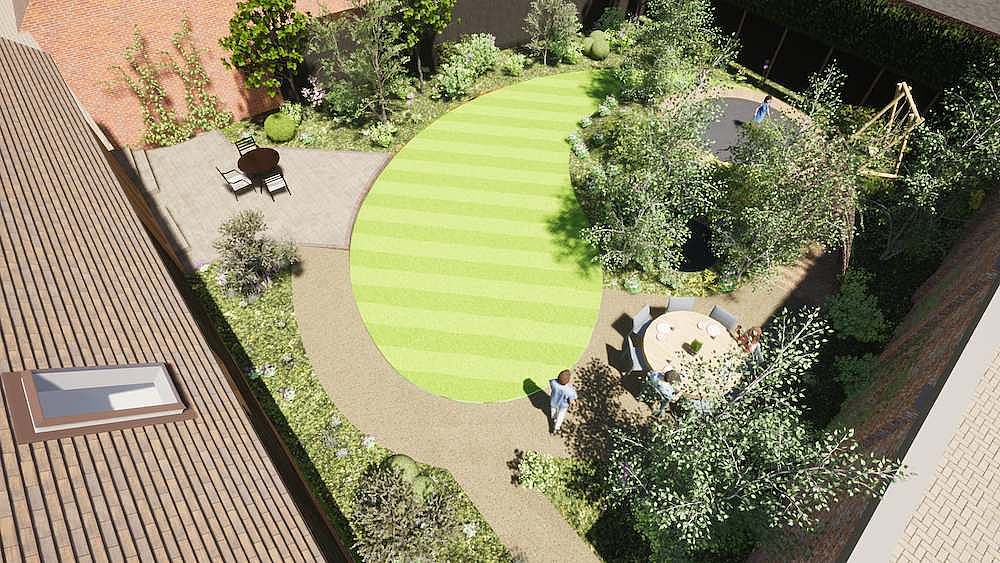Wildlife friendly garden design
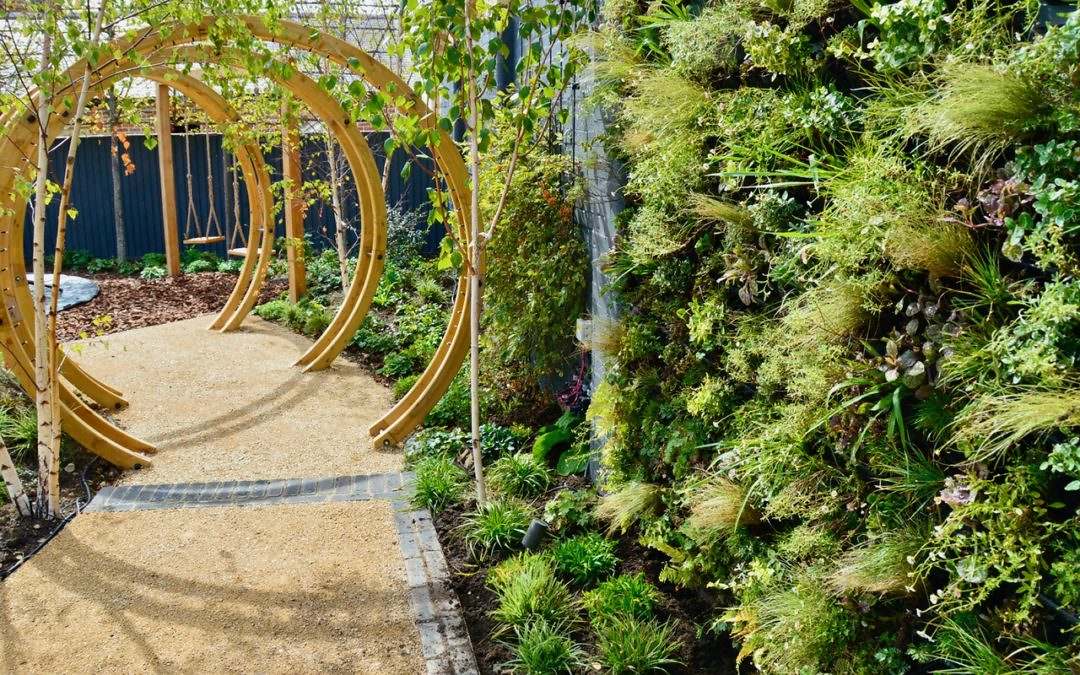
BRIEF
Our client, a couple with young children, wanted a wildlife friendly garden design which also provided space for the kids to play. We wanted to create this wildlife and child friendly garden design in Buckinghamshire, to compliment their stylish barn conversion and add much more interest to the existing space which was mainly one large lawn. Our client wanted space for a trampoline, which always creates a challenge for garden designers as they are not the most aesthetically pleasing garden features!
Important for this design was to create more shade as the garden was South West facing with nothing to create shade within the existing garden where they could retreat from hot summer sun. We wanted to create new seating areas, one of which to be near the sound of water.
It was important to this client to design and build the garden with environmental and sustainability principles in mind – minimising the carbon footprint that would be involved in building the garden. We are increasingly being asked to minimise the environmental footprint of our gardens – locally sourcing or recycling materials and designing in a way that minimises waste and transportation. This garden design in Oxfordshire follows similar sustainable principles and is also designed to be family friendly.
DESIGN SOLUTION
We applied sustainable garden design principles throughout the design and build of this project. The new terrace was dimensioned and shaped in order to recycle existing stone near the house. The remainder of the surfaces were laid with self binding gravel for the paths and dining area and bark chips in the children’s play area – forming a soft surface for the kids to play on and less problematic if they fell over. Both of these materials could be sourced within the UK and not involve long distance supply chains. We completely reshaped the space, using sweeping curves that reflected the naturalistic feel the client wanted for the design. At the same time the garden felt like a ‘designed space’ with a tear dropped shaped lawn and wrap around paths. The trampoline was sunk into the ground at the far end of the garden, and the excavations were used to create a curved bank that screened the play area, which also included a swing, from the house. Our garden design process takes account of how the clients will love the finished garden but also how it would be built – within the constraints of the site and budget. Creating a landform from the excavations needed to sink the lawn into the ground meant that we did not create waste that had to be removed from site – which would increase the carbon footprint. As trampolines won’t be used once the kids have grown out of them, we discussed how we might ‘future proof’ the design so that the trampoline could be removed without needing to completely redesign the garden. We created a garden design that took this into account – we could create a sunken seating area with a fire pit where the trampoline is currently located, as this area is connected to the dining area via 3 moon gates. The moon gates create a fun journey between the seating and play areas, forming part of circular route around the garden. Immediately next to the main seating and dining area was a pool, stocked with wildlife friendly plants. A natural cascade of water was added, making use of the landform we had created, and was designed so that the water trickled into the pool – adding the relaxing sound of water the client asked for. The wildlife friendly garden design included a number of semi mature Silver Birch trees – which created a naturalistic woodland edge feel and added some much needed dappled shade.
Our clients were delighted with their garden. They especially liked how the varied planting created a constantly changing palette of colours and long season of interest. We were particularly pleased with the tranquility of the dining area – which was enveloped on three sides by the pond and waterfall (which was well built by a specialist supplier), a living green wall, and the dappled shade of silver birch trees.
